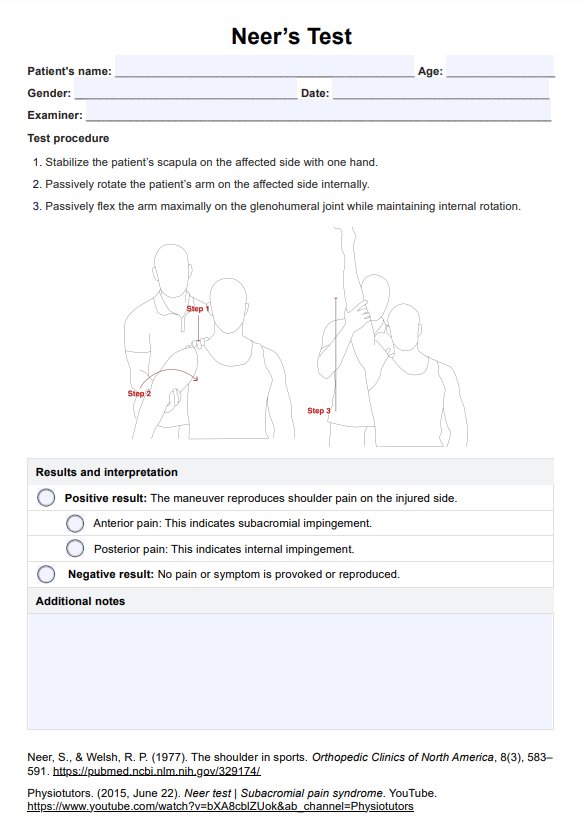The Neer test focuses on assessing forward flexion and subacromial impingement by passively elevating the arm, while the Hawkins test evaluates internal impingement by flexing the shoulder and elbow to 90 degrees, then applying internal rotation.

Neer's test is a diagnostic tool for shoulder impingement syndrome. Learn how this simple physical exam can identify the source of your patient’s shoulder pain.
The Neer test focuses on assessing forward flexion and subacromial impingement by passively elevating the arm, while the Hawkins test evaluates internal impingement by flexing the shoulder and elbow to 90 degrees, then applying internal rotation.
According to Hegedus et al. (2012), the Neer test has a sensitivity of 0.72 and a specificity of 0.60 in diagnosing shoulder impingement.
The Neer test is passive, meaning the examiner moves the patient’s arm without active participation from the patient.
EHR and practice management software
*No credit card required
Free
$0/usd
Unlimited clients
Telehealth
1GB of storage
Client portal text
Automated billing and online payments